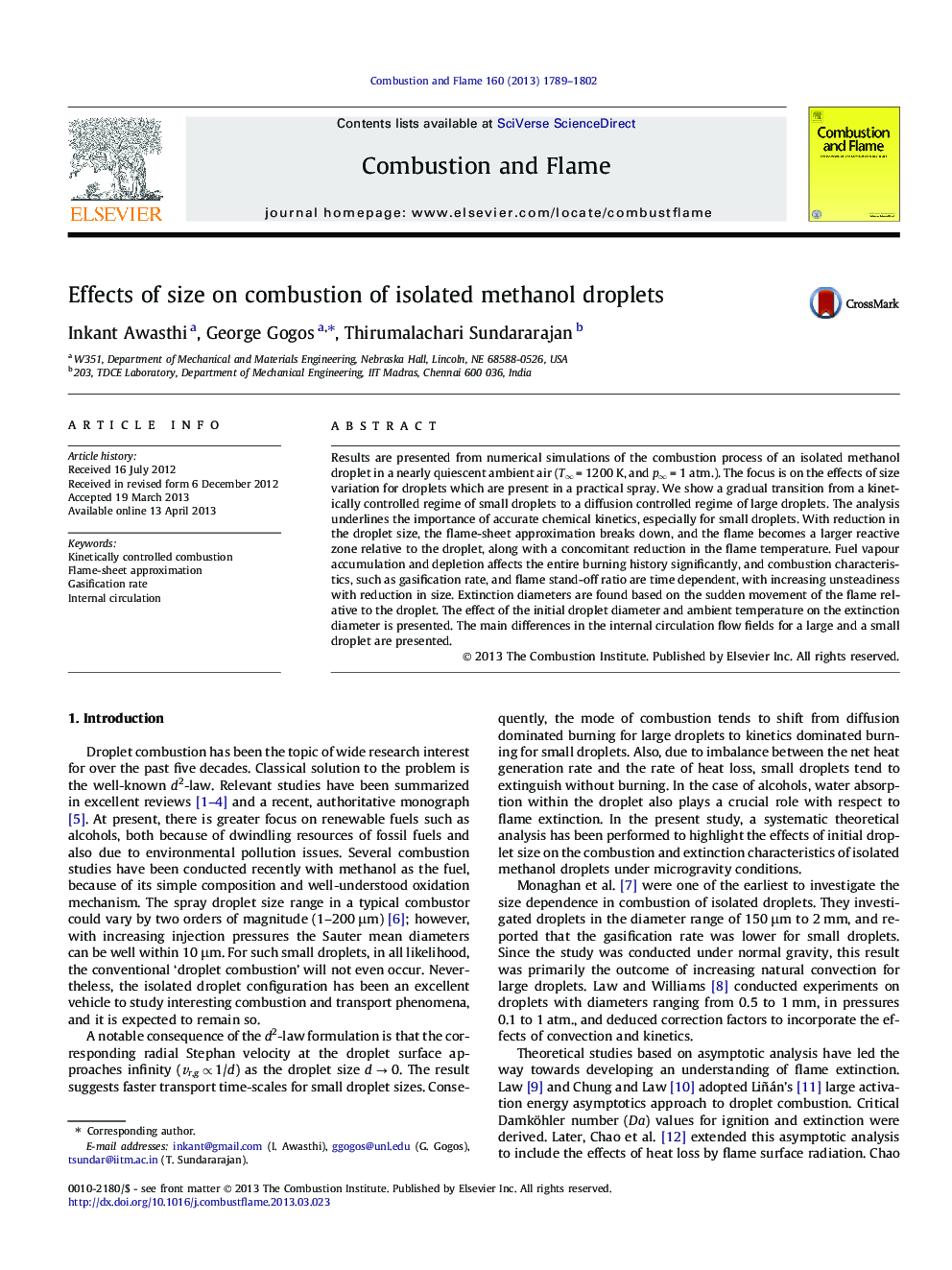| Article ID | Journal | Published Year | Pages | File Type |
|---|---|---|---|---|
| 166952 | Combustion and Flame | 2013 | 14 Pages |
Results are presented from numerical simulations of the combustion process of an isolated methanol droplet in a nearly quiescent ambient air (T∞ = 1200 K, and p∞ = 1 atm.). The focus is on the effects of size variation for droplets which are present in a practical spray. We show a gradual transition from a kinetically controlled regime of small droplets to a diffusion controlled regime of large droplets. The analysis underlines the importance of accurate chemical kinetics, especially for small droplets. With reduction in the droplet size, the flame-sheet approximation breaks down, and the flame becomes a larger reactive zone relative to the droplet, along with a concomitant reduction in the flame temperature. Fuel vapour accumulation and depletion affects the entire burning history significantly, and combustion characteristics, such as gasification rate, and flame stand-off ratio are time dependent, with increasing unsteadiness with reduction in size. Extinction diameters are found based on the sudden movement of the flame relative to the droplet. The effect of the initial droplet diameter and ambient temperature on the extinction diameter is presented. The main differences in the internal circulation flow fields for a large and a small droplet are presented.
